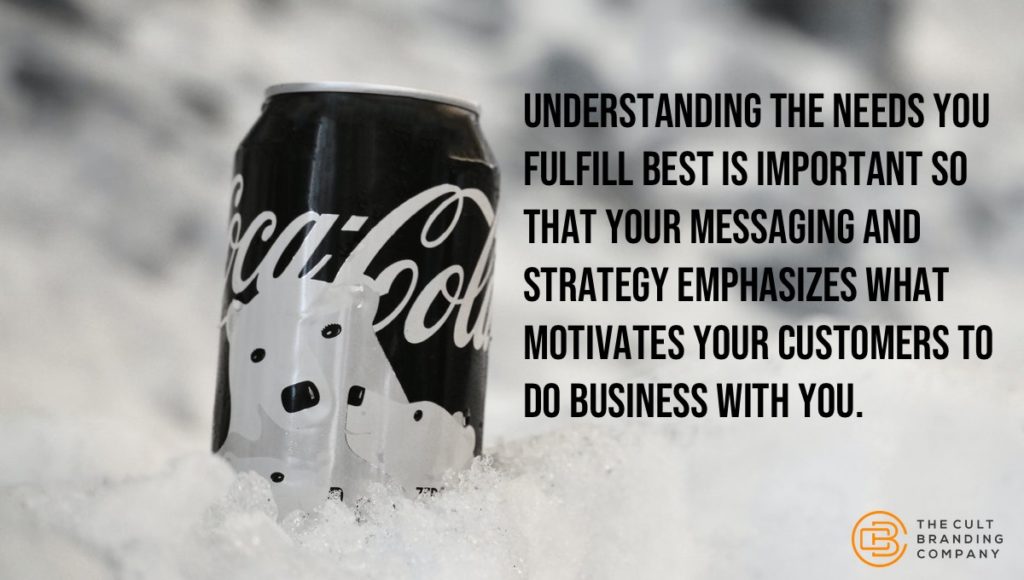
Our approach to understanding customers is founded on what we call the Brand DNA. Brand DNA is the root of developing all long-term strategies and short-term tactics. The Brand DNA consists of three interlocking parts:
- Maslow’s Hierarchy of Needs
- Jungian Archetypes
- The Cultural Story
Maslow’s Hierarchy of Human Needs
Our work on customers began twenty years ago trying to understand why some customers develop strong relationships with some brands—brands we labeled Cult Brands. At the heart of this understanding was humanistic psychology, specifically Maslow’s hierarchy of human needs.
Maslow described these needs as instinctoid: they function instinctually in a way like a fight or flight response does.
On some level, these needs motivate everything we do, including purchasing behavior. But not every brand satisfies the same needs.
Understanding the needs you fulfill best is important so that your messaging and strategy emphasizes what motivates your customers to do business with you. It’s important for brands to play to their strengths.
Jungian Archetypes
Humanistic psychology acts as a foundation, but it offers an incomplete picture: it doesn’t explain how the instincts manifest psychically or phenomena like some mothers not having strong maternal instincts.
For this, we turn to Carl Jung’s work on archetypes. Jung has largely been misused by the business world. Those that attempt to apply Jungian ideas tend to try and pigeonhole brands into a limited number of archetypes. This runs counter to Jung’s thinking: he saw the number of potential archetypes as being vast.
Jung thought of archetypes as patterns fueled by instincts.
These archetypes are evolutionary psychic structures. He used the term collective unconscious to describe the sum of all these structures that influence a person’s psyche. They organize the way we interact with and view the world.
Archetypes have both positive and negative—what he called the shadow—sides. This explains why some manifestations of the mother archetype may result in a lack of nurturing.
Understanding what archetypes are linked to your brand is important so that you can reinforce the patterns that positively affect your customers’ psyches and avoid affecting them negatively by accidently emphasizing shadow aspects of the archetype.
The Cultural Story
The Cultural Story is perhaps the most complex piece of the Brand DNA. It takes into account both the hierarchy of human needs and archetypes, and how they manifest to solve tensions in the culture or subculture of the customers.
It is the story of your brand in the customers’ lives.
The Cultural Story is rooted both in ideas of comparative mythology—how stories common to all cultures manifest in a modern, relevant context—and marketing ideas of drivers of choice, drivers of differentiation, and a competitive landscape.
Understanding the Cultural Story is important because it explains how you solve problems that are important in your customers’ lives and how to position yourself against your biggest competitors.
Onward
To begin uncovering your brand’s Brand DNA, start thinking about:
- What needs in Maslow’s hierarchy does your brand fulfill the best?
- What are you doing to reinforce these needs?
- Are you reinforcing any needs that don’t play to your brand’s strengths?
